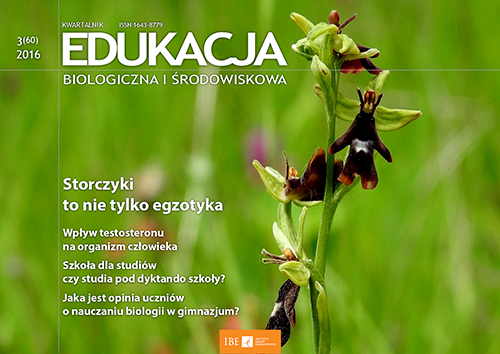Oddziaływanie allelopatyczne Synechococcus sp. na wybrane szczepy nitkowatych sinic
Allelopathic effects of Synechococcus sp. on selected cyanobacteria
Author(s): Sylwia Śliwińska-Wilczewska, Jakub Maculewicz, Adam LatałaSubject(s): Energy and Environmental Studies, Human Ecology, Environmental interactions
Published by: Instytut Badań Edukacyjnych
Keywords: allelopathy; cyanobacteria; growth; photosynthetic pigments;
Summary/Abstract: Field studies and laboratory experiments have shown that allelopathy occurs in all marine, brackish and freshwater habitats. In this study the influence of allelopathic activity on the filamentous cyanobacteria Nostoc sp. and Rivularia sp. was investigated by the addition of a cell-free filtrate of picocyanobacterium Synechococcus sp. These studies indicate that the picocyanobacterium Synechococcus sp. affect Nostoc sp. negatively. It was examined that the Synechococcus sp. reveals allelopathic activity on the growth and pigment contents of analyzed cyanobacterium. At the 21st day of experiment it was noted that addition of the cell free-filtrate inhibited growth of Nostoc sp. and the minimum response was 39%, relative to the control. The study also indicated that the addition of the picocyanobacterial filtrate increased the carotenoid content, which was 25% higher, compared to the control. Additionally, it was observed that addition of the filtrate caused deformation and cell lysis of Nostoc sp. Moreover, the study showed that Synechococcus sp. had no allelopathic effect on growth of Rivularia sp. However, after the cyanobacterial cell free-filtrate addition, the minimum response of chlorophyll a content of Rivularia sp. was 31% lower, than for control. The release of allelopathic compounds may be beneficial to the donor organisms, by limiting the condition and number of competitors.
Journal: Edukacja Biologiczna i Środowiskowa
- Issue Year: 2016
- Issue No: 3
- Page Range: 11-18
- Page Count: 8
- Language: English
- Content File-PDF

